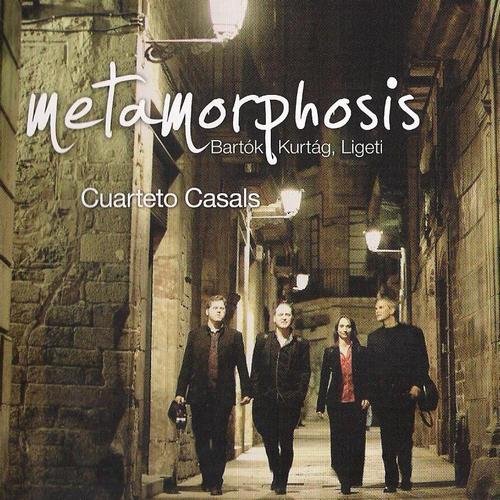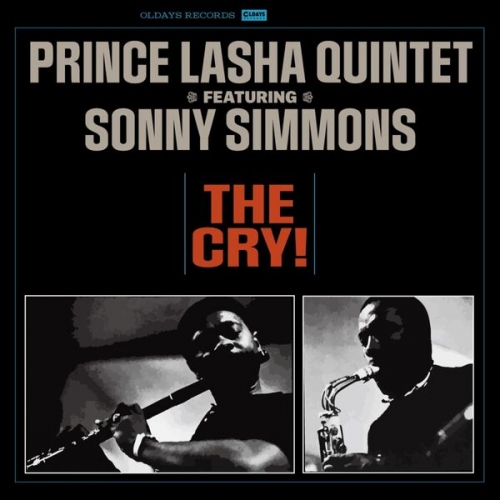Cuarteto Casals - Metamorphosis: Bartók, Kurtág, Ligeti (2010)

Artist: Cuarteto Casals
Title: Metamorphosis: Bartók, Kurtág, Ligeti (2010)
Year Of Release: 2010
Label: Harmonia Mundi
Genre: Classical
Quality: APE (image+.cue,log,scans)
Total Time: 00:54:12
Total Size: 244 Mb
WebSite: Album Preview
Tracklist: Title: Metamorphosis: Bartók, Kurtág, Ligeti (2010)
Year Of Release: 2010
Label: Harmonia Mundi
Genre: Classical
Quality: APE (image+.cue,log,scans)
Total Time: 00:54:12
Total Size: 244 Mb
WebSite: Album Preview
1-5. Béla Bartók - string quartet no.4 sz.91
6-13. György Ligeti - string quartet no.1 “métamorphoses nocturnes”
14 5. György Kurtág - 12 microludies for string quartet op.13 “hommage à andrás mihály”
Performers:
Cuarteto Casals
String quartets tend to offer all-Bartók or all-Ligeti discs, so this three-stage history of the medium in Hungary over the half-century between Bartók’s Fourth (1928) and Kurtág’s Microludes (1977-78) is doubly welcome.
Pride of place goes to Ligeti’s First Quartet (1953-54), which has the subtitle “Métamorphoses nocturnes”. The nocturnal imagery has none of the gentle, relaxed quality familiar from Romantic tradition: this large-scale single-movement design offers a volatile, nightmarish yet never heavy-handed succession of strongly contrasted states of mind. The players handle its considerable technical challenges with ease, yet they never suggest that (for all its ebullience and wit) the piece should be taken lightly. Alongside it, the Bartók seems all too willing to conform to the symmetrical dictates of its classically based forms. Despite its bracingly tense dissonances and spirited deployment of diverse sonorities – the fourth movement pizzicato throughout – this performance doesn’t manage to dispel the suspicion that, for once, the composer was going through the motions.
György Kurtág has always acknowledged the importance for him of Ligeti’s example, and his set of 12 Microludes shares a comparable concern with balancing sequences of short, distinctively characterised segments to make a satisfying whole. Whereas the longest of Ligeti’s eight sections lasts over four minutes, none of Kurtág’s 12 breaks the two-minute barrier. But with material as imaginative and arresting as this, the music needs no more time to makes a supremely powerful impact.
All these performances are accomplished, and although the dynamic range of the recording seems extravagantly extreme, the cumulative effect of the programme is satisfyingly substantial.
Pride of place goes to Ligeti’s First Quartet (1953-54), which has the subtitle “Métamorphoses nocturnes”. The nocturnal imagery has none of the gentle, relaxed quality familiar from Romantic tradition: this large-scale single-movement design offers a volatile, nightmarish yet never heavy-handed succession of strongly contrasted states of mind. The players handle its considerable technical challenges with ease, yet they never suggest that (for all its ebullience and wit) the piece should be taken lightly. Alongside it, the Bartók seems all too willing to conform to the symmetrical dictates of its classically based forms. Despite its bracingly tense dissonances and spirited deployment of diverse sonorities – the fourth movement pizzicato throughout – this performance doesn’t manage to dispel the suspicion that, for once, the composer was going through the motions.
György Kurtág has always acknowledged the importance for him of Ligeti’s example, and his set of 12 Microludes shares a comparable concern with balancing sequences of short, distinctively characterised segments to make a satisfying whole. Whereas the longest of Ligeti’s eight sections lasts over four minutes, none of Kurtág’s 12 breaks the two-minute barrier. But with material as imaginative and arresting as this, the music needs no more time to makes a supremely powerful impact.
All these performances are accomplished, and although the dynamic range of the recording seems extravagantly extreme, the cumulative effect of the programme is satisfyingly substantial.

![Lionel Hampton with The Just Jazz All Stars - Lionel Hampton with The Just Jazz All Stars (Live) (Remastered) (2022) [Hi-Res] Lionel Hampton with The Just Jazz All Stars - Lionel Hampton with The Just Jazz All Stars (Live) (Remastered) (2022) [Hi-Res]](https://www.dibpic.com/uploads/posts/2025-12/1766822354_lhjj500.jpg)



![Frank Sinatra - Sinatra's Sinatra A Collection Of Frank's Favorites (1963) [2021 SACD] Frank Sinatra - Sinatra's Sinatra A Collection Of Frank's Favorites (1963) [2021 SACD]](https://www.dibpic.com/uploads/posts/2025-12/1766775619_folder.jpg)


